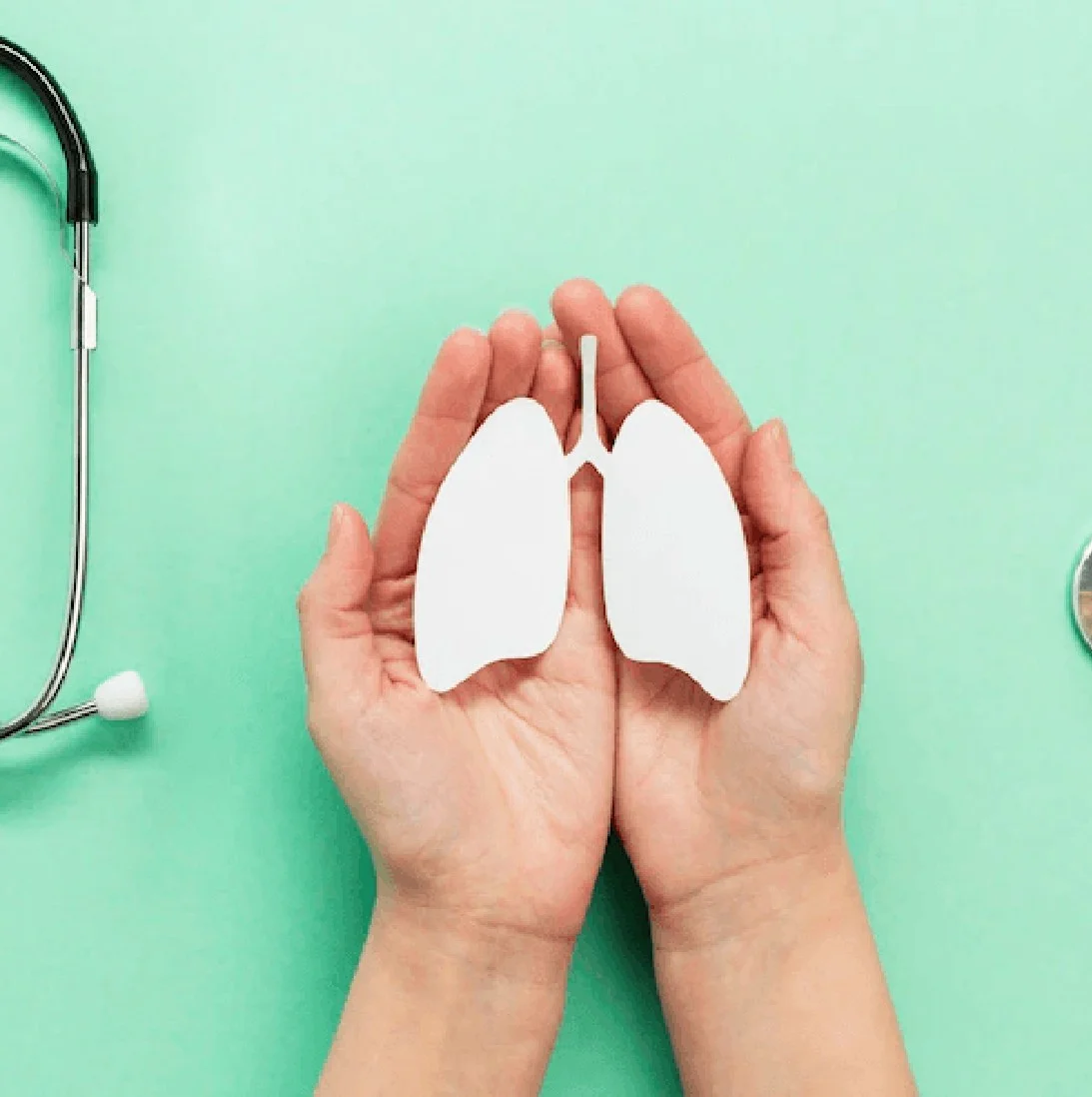
Department of Pulmonology and Respiratory Medicine
Welcome To Gangasheel Hospital
What is COPD ?
Chronic obstructive pulmonary disease (COPD) is a chronic inflammatory lung disease that causes obstruction of airflow from the lungs. Symptoms include difficulty breathing, coughing, phlegm production, and wheezing. It is usually caused by prolonged exposure to irritating gases or particles, most commonly cigarette smoke. COPD patients are at increased risk of developing heart disease, lung cancer, and many other diseases.
Emphysema and chronic bronchitis are the two most common conditions that cause COPD.
These two conditions usually coexist and vary in severity in patients with COPD.
Chronic bronchitis is inflammation of the lining of the bronchi, which carry air to and from the air sacs (alveoli) of the lungs. It is characterized by daily coughing and mucus secretion.
Emphysema is a condition in which the alveoli at the end of the smallest airways (bronchioles) in the lungs are destroyed as a result of exposure to cigarette smoke and other irritating gases and particles.
COPD is a progressive disease that gets worse over time, but COPD is treatable. With proper treatment, most COPD patients can achieve good symptom control and quality of life, as well as reduce the risk of other comorbidities.
Symptoms of COPD often do not appear until significant lung damage has occurred and usually worsen over time, especially if you continue to smoke.
Signs and symptoms of COPD may include:
- Shortness of breath, especially with physical activity
- Wheezing
- Chest tightness
- Clear, white, yellow, or greenish mucus (sputum)
- Chronic cough that produces
- Frequent respiratory infections
- Lack of energy
- Unintentional weight loss (at a later stage)
- Swollen ankles, feet, or legs
Patients with COPD are also more likely to experience episodes called exacerbations, During that time, the symptoms are worse than the usual daily fluctuations. And at least the last few days.
- Smoking is the leading cause of COPD in developed countries. In developing countries, he often develops COPD in people exposed to smoke from burning fuels used for cooking and heating in poorly ventilated homes.
- Only some chronic smokers develop clinically significant COPD, but many long-term smokers may develop decreased lung function. Some smokers develop less common lung diseases. It can be misdiagnosed as COPD until a more thorough evaluation is done.
- Unlike other diseases, COPD usually has a definite cause and avenues to prevention, and ways to slow disease progression. Most cases are directly related to smoking, and the best way to prevent COPD is to never smoke or quit now.
- For longtime smokers, these simple instructions may seem daunting, especially if you've tried to quit once, twice, or many times. But I keep trying to quit. Finding a smoking cessation program that will help you quit smoking permanently is important. This is your best chance to reduce the damage to your lungs.
- Occupational exposure to chemical fumes and dust is another risk factor for COPD. If you are dealing with these types of lung irritants, talk to your supervisor about how best to protect yourself, including: B. Using a ventilator.
- Here are some things you can do to avoid complications related to COPD.
- Quit smoking to reduce your risk of heart disease and lung cancer.
- Reduce your risk of infection or prevent some infections by getting an annual flu shot and regular pneumococcal vaccination.
- Talk to your doctor if you feel sad, helpless, or depressed.
Treatment can relieve symptoms, prevent complications, and generally slow disease progression. The medical team may include a pulmonary specialist (pulmonologist), physical therapist, and respiratory therapist.
Oxygen Therapy
If blood oxygen levels are too low, oxygen can be given through a mask or nasal cannula to improve breathing. A portable unit makes it easy to move around.
- Surgery is performed in severe cases of his COPD or when other treatments have failed. This is more likely to occur if you have some form of severe emphysema.
- One type of surgery is called a bulletomy. In this procedure, the surgeon removes large, abnormal air spaces (bras) from the lungs.
- Another surgery is lung volume reduction that removes damaged upper lung tissue. Lung volume reduction surgery can effectively improve breathing, but few patients undergo this extensive and somewhat risky procedure.
- In some cases, lung transplantation is an option. Lung transplantation is an effective treatment for COPD, but it carries many risks.
- There is a less invasive method to improve airflow efficiency in patients with severe emphysema called the endobronchial valve (EBV). These are one-way valves that direct inhaled air toward healthy lungs and away from non-functioning, damaged lungs.
- In 2018, his EBV device, called the Zephyr Endobronchial ValveTrusted Source, was FDA approved and shown to improve lung function, exercise tolerance and quality of life in emphysema patients.
Yes, COPD treatment is available in Bareilly at Gangasheel Hospital by the team of expert Pulmonologists in the city.
